
- Usage in publication:
-
- Silver Pass volcanics
- Modifications:
-
- First used
- AAPG geologic province:
-
- Cascades province
Summary:
First use of the name Silver Pass volcanics. Consists of andesite flows. Unconformably overlies the Swauk arkose; unconformably underlies the Teanaway basalt. Age is Tertiary.
Source: GNU records (USGS DDS-6; Menlo GNULEX).
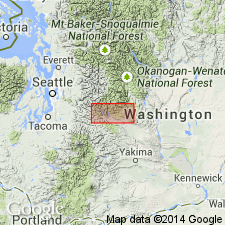
- Usage in publication:
-
- Silver Pass volcanic rocks
- Modifications:
-
- Named
- Dominant lithology:
-
- Andesite
- Tuff
- Breccia
- AAPG geologic province:
-
- Cascades province
Summary:
Silver Pass volcanics (Foster, 1957) is named the Silver Pass volcanic rocks. Is named for Silver Pass, Kittitas Co., WA. Includes rocks previously assigned to the Kachess rhyolite (Smith and Calkins, 1906). Consists of lava, pyroclastic rocks, and volcanic sedimentary rocks. The unit is heterogeneous and is characterized by abrupt horizontal and vertical changes in rock type. Overlies the Easton schist in the type area; elsewhere overlies the Swauk formation; underlies the Teanaway basalt. At Silver Pass is intruded by basaltic dikes that are presumably the Teanaway dike swarm. Age is Paleocene or Eocene (Eocene? on map).
Source: GNU records (USGS DDS-6; Menlo GNULEX).
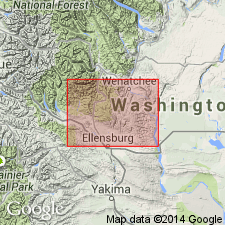
- Usage in publication:
-
- Silver Pass Volcanic Rocks*
- Modifications:
-
- Geochronologic dating
- AAPG geologic province:
-
- Cascades province
Summary:
Silver Pass Volcanic Rocks of Foster (1960) are early Eocene based on a fission-track (zircon) date of 50.4 Ma on rocks in the near Liberty; similar tuffs have fission-track dates of 50.5, 48.6, and 43.6 Ma. Silver Pass rocks exposed of the Wenatchee sheet (1:100,000) have fission-track (zircon) dates of 53 +/-5 and 51 +/-5 Ma.
Source: GNU records (USGS DDS-6; Menlo GNULEX).
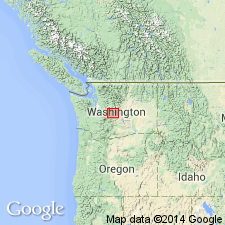
- Usage in publication:
-
- Silver Pass Volcanic Member*
- Modifications:
-
- Adopted
- Revised
- AAPG geologic province:
-
- Cascades province
Summary:
Silver Pass volcanic rocks (Foster, 1960) are adopted as the Silver Pass Volcanic Member of the Swauk Formation. Thickness is about 1,800 m. Age is Eocene [text states early Eocene based on fission-track dates in Table 2; figure 7 shows age as early and middle Eocene].
Source: GNU records (USGS DDS-6; Menlo GNULEX).
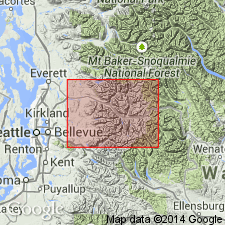
- Usage in publication:
-
- Silver Pass Member*
Summary:
Not compiled to date. Publication available online: http://ngmdb.usgs.gov/Prodesc/proddesc_10042.htm
Silver Pass Member of Swauk Formation. Age is early Eocene.
Source: Publication.
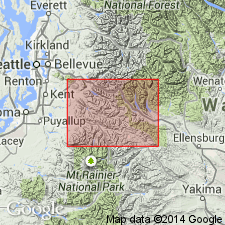
- Usage in publication:
-
- Silver Pass Volcanic Member*
- Modifications:
-
- Areal extent
- AAPG geologic province:
-
- Cascades province
Summary:
Silver Pass Volcanic Member of the Swauk Formation if geographically extended into the report area. Age is early Eocene.
Source: GNU records (USGS DDS-6; Menlo GNULEX).
For more information, please contact Nancy Stamm, Geologic Names Committee Secretary.
Asterisk (*) indicates published by U.S. Geological Survey authors.
"No current usage" (†) implies that a name has been abandoned or has fallen into disuse. Former usage and, if known, replacement name given in parentheses ( ).
Slash (/) indicates name conflicts with nomenclatural guidelines (CSN, 1933; ACSN, 1961, 1970; NACSN, 1983, 2005, 2021). May be explained within brackets ([ ]).

